
Rabbi Pinchos Lipschutz
It was after Havdolah following the first days of yom tov. The grape juice formed a small purple pool in its dish, the atmosphere light and joyous as we discussed chol hamoed plans.
Should we go to the park or the zoo?
My heart pulled me to Manhattan, because I had a different sort of trip in mind. In Manhattan, I could visit my friend, Reb Aron Stefansky, who lay in the hospital.
Our deliberations were interrupted by a text message from his family: He was niftar on the first day of Pesach.
Suddenly, it was eerily quiet. Everyone sat around the table with sad eyes. No words were exchanged. We were all lost in thought.
Then the memories came rushing in, along with recollections of our dear family friend. I keep on hearing his voice.
Reb Aron! We knew he was sick, but he was doing well before a sudden setback sent him to the hospital again after Purim for a procedure. He was back home for Shabbos Hagadol, and when we visited him then, he seemed to be doing well. Then another setback, another procedure. He was in the hospital one final time before passing away on the first day of yom tov.
And now he’s gone.
Were you to ask me, as I mourn his loss, to sum up what made him so special, I can think of one thing that encompasses all others: He was a dear friend, a yedid ne’eman.
Not just to me, but to so many others. He was a reliable and steady friend to the people he cared about, including friends, rabbeim, talmidei chachomim, yeshivos, kollelim, chesed organizations, and local schools. He was always giving and raising needed funds.
He understood struggle and financial hardship, because he grew up without much money. When Hashem blessed him with success, he channeled that brochah toward worthy causes. And never did hachzokas haTorah replace limud haTorah, as he started each day with his cherished chavrusashaft with Rav Yeruchim Olshin.
Like so many others, he learned at Yeshivas Brisk, under Rav Avrohom Yehoshua Soloveitchik, but for him, it wasn’t just a passing experience. Even after returning home, he never really left the yeshiva. His mind was always there. He never stopped helping his rebbi and the yeshiva. Only a person who worked lesheim Shomayim, without thought of personal honor or prestige, could have merited such a major part in building a yeshiva that is a bastion of emes and authenticity, with no chanifah or social climbing.
It wasn’t only Brisk and it wasn’t only Rav Soloveitchik to whom he was dedicated. He was close to and supportive of many yeshivos and roshei yeshiva, giving what they needed to survive and flourish. For him, supporting them was part of his life. His entire being was thrust into the causes he was involved in. He thought about them, cared about them, and was never meisiach daas from them.
There was a time when people spoke about the meaning and necessity of friendship, yedidus. In the mussar yeshivos of Lita, they understood that a good friend was a spiritual acquisition. It called for real selflessness and generosity. Friendship, they understood, is far more than a social convenience.
When marauding Arabs tore through the holy yeshiva in Chevron in 1929, they killed many budding talmidei chachomim and injured others. One talmid lay there after being attacked, bloody and battered, and with his final breaths he pulled his injured friend close.
“The resho’im are checking who’s dead and they’re looking for signs of life so that they can finish the job. Lie still, and before I die, I will bleed on you,” the first bochur suggested. “Then they will assume that you are dead, too. This way, they will pass you by and you will live.”
The Chevroner talmid pressed himself to his friend, pouring blood on him. Then his soul left him. The second bochur survived.
This provides us with a new p’shat in the hallowed words, ‘Bedomayich chayi – By your blood you shall live.”
The Chevroner talmidim would retell this story, evidence that yedidus and dibbuk chaveirim are intrinsic to the baal mussar, how a talmid of the Slabodka approach, even in what he knew was his final moment, used the time not to recite vidui or Krias Shema, but to cause his yedid to live.
We are all connected. A friend is someone who understands that and sees himself as belonging to his fellow man.
We all need friends who understand us, who bleed for us when we need help, and who celebrate our simchos with us. We need friends who appreciate us, who support us when we are down and advise us how to get up. We need friends we grew up with, who we can be open with and count on. Loneliness is very difficult and very sad.
Rav Moshe Shapiro examined the root of the word “yedid,” which the Torah utilizes for friendship. He says that the word is composed of the repetition of the word “yad,” which means hand.
Rav Shapiro explained that the word “yad” is repeated twice to form the word that denotes friendship, because man’s two hands signify conflicting actions. The right hand draws close, yemin mekareves, while the left hand pushes away, semol docheh. A person requires intelligence to be able to judge a situation and know when it is time for closeness and when to stand apart.
For a yedid, however, there is no downtime. A friend is never pushed away. There is no richuk; there is only kiruv. With yad and yad again, both hands join together to maintain the friendship.
The martyred Chevroner talmid lived that reality until his demise. He was neither overwhelmed nor confused or panicked as he lay dying, because he was a friend, and part of being a friend is being aware of your role and what friendship entails.
Rav Yitzchok Hutner, one of the great transmitters of the glory of Slabodka and Chevron, would speak to his talmidim about the responsibility that comes with friendship. He once asked a talmid to get involved with a friend who was in spiritual crisis. The talmid told him that he had tried to help the fellow, but his efforts were in vain. Rav Hutner wrote him a letter.
“You say that you are powerless to help… Are there no more tears left in your eyes? Thankfully, we still believe in the power of a perek of Tehillim when it is recited with a broken heart…”
Friendship is constant. There is no such thing as powerless.
Reb Aron Stefansky was such a yedid. He never stopped giving, with both hands outstretched, both hands extended, both hands giving money, time and heart.
Aron started out selling antique seforim and manuscripts, a passion he developed as an outgrowth of his yedidus with his rebbi, Rav Yitzchok Perman shlit”a. Though I had little money, he would beg me to buy classic letters he had come across. He didn’t do it for the money. He did it for the love.
The first letter I bought following his many pleas was a classic, he said. It was heilig. “How can you not want to have it?” he asked. He was right, of course. It was the letter that Rav Boruch Ber Leibowitz wrote to his talmid, Rav Shlomo Heiman, expressing his love for him in a most beautiful manner. Rav Shlomo so treasured the letter that he kept it in his talis bag.
Aron was my friend and wanted me to have it. I paid for it over time, $25 a month.
The second letter he sold me was also a classic, touching one. Initially, I didn’t appreciate it. He could have easily sold it to someone else, but he wanted me to have it. It was a beautiful letter that Rav Elchonon Wasserman wrote about the Chofetz Chaim. “You must have it,” he said. Again, I paid him $25 a month for that letter.
I went on to buy more letters, each one was precious to him. He was devoted to his rabbeim, to Torah, to the past generations, to history, to authenticity, to what is really beautiful, to aristocracy in Torah and to chesed. Seforim and letters weren’t just a way to make a living. They were his life-long passion.
A couple years ago, he called me about a certain sefer.
“I’m not a seforim collector,” I protested.
“You don’t have to be a collector to have this sefer,” he said. “It’s gorgeous. It’s historic. It’s something you will learn from and treasure.”
I was stubborn.
“Listen,” he insisted. “You’re my friend and I want you to have it. At no cost to you, I am going to have it expertly rebound with a gorgeous cover. You’ll take it and you will thank me later.”
I bought it and I thanked him.
Aron was a real friend. He was caring. He rejoiced when others celebrated simchos and achieved success. When there was a gap that needed to be filled, he was there. When gedolei Yisroel were attacked, he was impacted and did all he could to restore their honor. He didn’t just talk about such occurrences. He deeply cared and got involved.
The last time I visited him in the hospital, Rav Yisroel Aharon Schapira, rosh kollel of Bais Medrash Taharos in Yerushalayim, was there as well. Before he left, Aron told him that he wanted to give him money for the yungeleit for yom tov. He emphasized that this was an extra donation, besides what he was already giving. “I want you to promise me that they will get this money for yom tov,” he repeated. “I am a choleh. I need zechusim.”
He was optimistic about the future, but he knew that he needed zechusim, and the biggest zechus is to support talmidei chachomim.
His son drove in from Lakewood to see his father, but Aron didn’t have time for small talk. He needed zechusim. From his hospital bed, he was raising money for Yeshivas Brisk for yom tov. As soon as his son walked into the room, he sent him to pick up a check and bring it to someone who would get it to Rav Avrohom Yehoshua Soloveitchik in time to distribute the money to yungeleit for yom tov.
His wants and desires were based on Torah. His ambitions and hashkofos were from the Torah, and as he lay in bed with medicines and food trickling intravenously into his body, his active mind raced, thinking of what he could do to help yungeleit.
Rav Chaim Volozhiner writes in Ruach Chaim, his peirush on Pirkei Avos (1:1), that when a person intends to do a mitzvah, a mark is made in Heaven and a light of holiness, ohr makif meihakedushah, hovers over him and enables him to complete his desire and fulfill that mitzvah, and he sits as if in Gan Eden, enveloped in holiness. When the mitzvah has been completed, the person is strengthened, but the light returns to Gan Eden, where it awaits the arrival of that neshomah.
As one who constantly thought about how he can help talmidei chachomim and mosdos haTorah, Aron earned tremendous zechusim, whose benefits he now enjoys until techias hameisim.
At the time of one of my visits, he had not eaten in a couple weeks and had no appetite, but he insisted that I eat something. I protested that I wasn’t hungry, but he would hear none of it. There was an orange on the window sill, courtesy of Bikur Cholim, so I picked it up and began eating it. As he watched me eat it, he derived such pleasure and a smile broke out on his face. He told his wife that he so enjoyed watching me eat the orange that for the first time in two weeks, he had an appetite to eat.
That is a real friend. Too weak to eat, with no appetite, he derived so much pleasure just from watching his friend eat that it was contagious and he wished to eat as well.
Perhaps this offers an understanding of Moshe Rabbeinu’s parting brochah to shevet Binyomin: “Yedid Hashem yishkon lavetach.” Since you are a “yedid” of Hashem, you will live peacefully. One who possesses that middah of yedid, lives serenely, because he always has someone to turn to. He is never alone. Binyomin, as a yedid Hashem, epitomized that middah and its benefits.
In this week’s parshah, we read about the avodah of Aharon Hakohein. The Torah speaks extensively about Aharon’s heart and the Choshen Mishpot that rested upon it. The heart of Aharon was pure, devoid of jealousy, and filled with joy for others.
The Gerrer Rebbe once remarked that the kohanim performed their avodah barefoot, because it was necessary for them to feel every small pebble and stone on the Bais Hamikdosh floor, figuratively experiencing the problems of the people and feeling their pain as they sought atonement for them and offered their korbanos.
Aharon Hakohein, the oheiv es habriyos, understood the suffering of the people. This made him an efficient shliach, able to stem mageifos and trouble.
As Rav Simcha Zissel walked down the main road into Kelm, his face was lined with pain. He explained that the road was constructed by political prisoners, who were forced to lay the pavement in blistering heat and freezing cold weather. He wondered how people could calmly walk down the street going about their business and not feel the pain of those who suffered tremendously in constructing that very road.
Those who learn and live Torah develop sensitivity and compassion. Raised in a home of Torah royalty, Reb Aron Stefansky toiled in Torah and supported Torah. He thus carried the pain of others in his heart.
Bezos yavo Aharon el hakodesh. With this, he returns to the holiness of Heaven, with his acts of tzedakah, chesed, his Torah and tefillah, his goodness and caring.
His family has lost a devoted husband, father, son and brother.
And many have lost a good friend.
We are entering the period of the year devoted to the avodah of friendship. Chazal (Yevamos 62b) teach that Rabi Akiva’s 24,000 talmidim died during the period of Sefirah because they did not display proper respect towards each other. They failed to appreciate the positive attributes of others and thus didn’t view other talmidim as yedidim deserving of care and dedication. They viewed them as mere acquaintances.
We are meant to emerge from Pesach more humble, having absorbed the taste and lessons of the matzah, devoid of ego, subsisting on the baked mixture of water and flour for eight days. The period between Pesach and Shavuos is a time designed for working on humility and respect for others.
It’s a time to make true friends, to work on the friendships we have, and to use them to do good things. People who harness the power of friendship and work together can achieve great things.
We need to join together with our friends and build. We need to look at the people around us and see their maalos. We need to be noheig kavod zeh bazeh and thus empower them and ourselves to look ahead and strive for positive achievements.
Hevei mitalmidov shel Aharon. Let us emulate Aron by caring about other people and fighting for truth, justice and Torah.
Every one of us can make a genuine difference if we care to. When enough compassionate people team up, they can change the world and bring geulah l’olam.
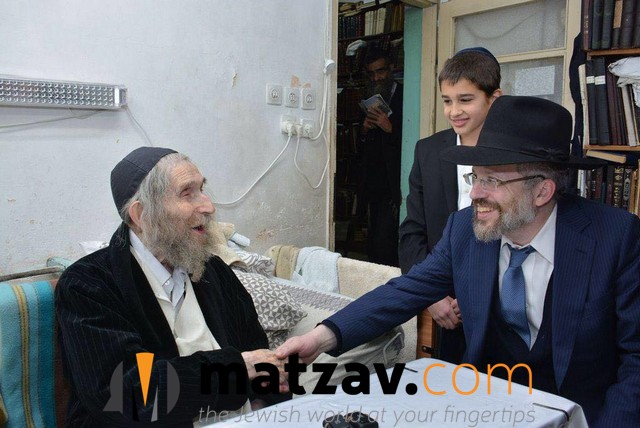
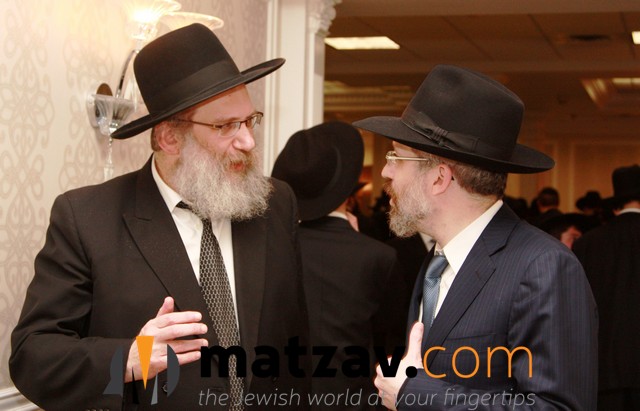
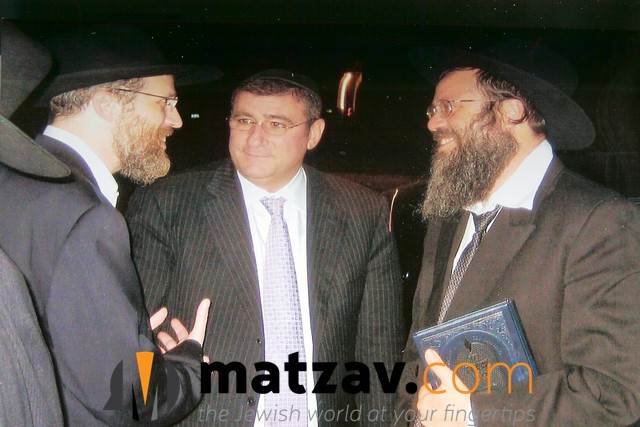
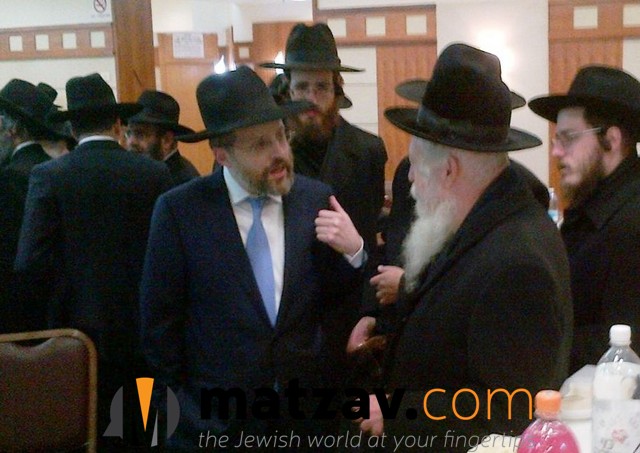
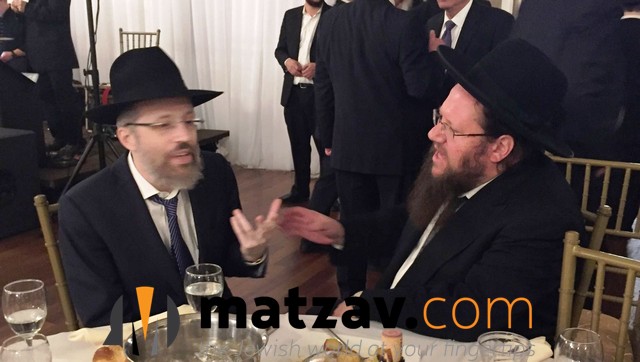
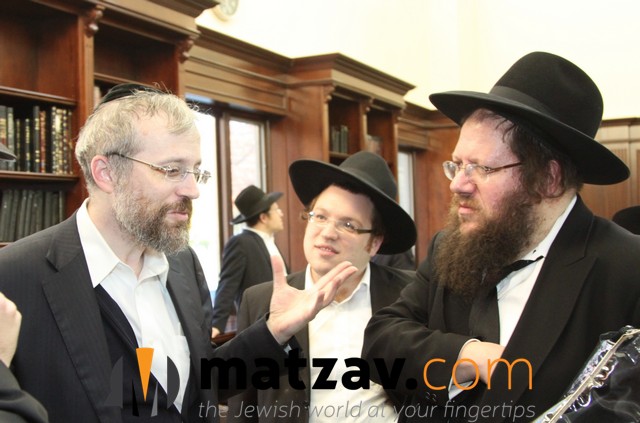
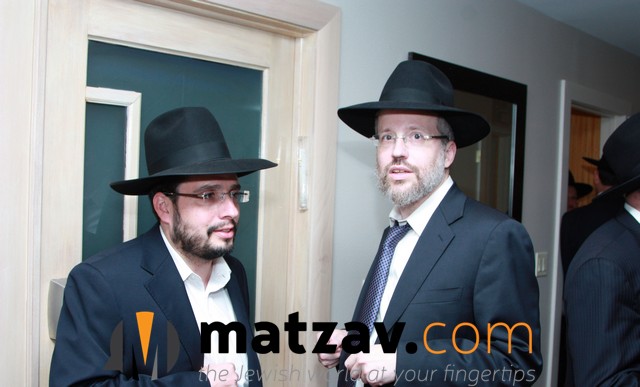
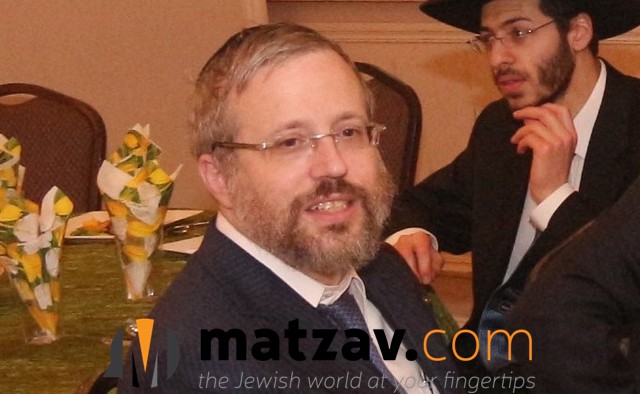
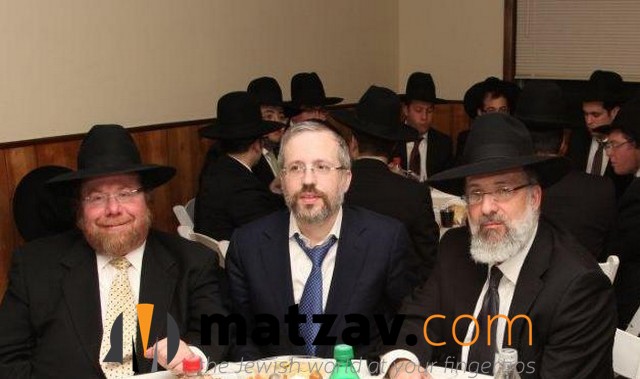

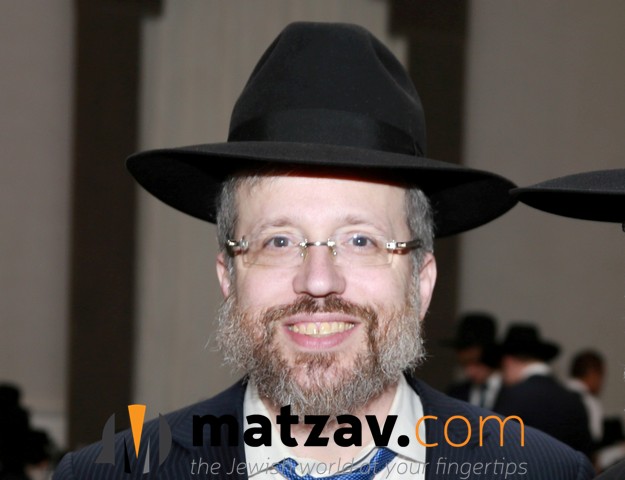
{Matzav.com}












wow what an excellent tribute to such a great person.